Tire problems don’t usually come with a warning—until you’re sliding through an intersection or pulled over with a flat on the shoulder. And by then, it’s too late.
If you drive in Chicago, you already know the streets don’t mess around. Between potholes that could swallow your coffee cup, slush-covered roads in January, and the daily stop-and-go grind, your tires take a beating. The problem is, most people don’t think about tire maintenance until something goes wrong—and that’s a risky (and expensive) game to play.
According to the National Highway Traffic Safety Administration (NHTSA), about 11,000 crashes every year are directly linked to tire issues. Many of those could’ve been avoided with a few simple checks or services.
So let’s get ahead of it. In this guide, we’re breaking down 8 tire maintenance tips every Chicago driver should know. Whether you’re trying to stretch the life of your tires, improve your car’s handling, or just avoid unexpected blowouts, these tips will help you stay safe and in control—all year long.
Tire problems don’t usually come with a warning—until you’re sliding through an intersection or pulled over with a flat on the shoulder. And by then, it’s too late.
If you drive in Chicago, you already know the streets don’t mess around. Between potholes that could swallow your coffee cup, slush-covered roads in January, and the daily stop-and-go grind, your tires take a beating. The problem is, most people don’t think about tire maintenance until something goes wrong—and that’s a risky (and expensive) game to play.
According to the National Highway Traffic Safety Administration (NHTSA), about 11,000 crashes every year are directly linked to tire issues. Many of those could’ve been avoided with a few simple checks or services.
So let’s get ahead of it. In this guide, we’re breaking down 8 tire maintenance tips every Chicago driver should know. Whether you’re trying to stretch the life of your tires, improve your car’s handling, or just avoid unexpected blowouts, these tips will help you stay safe and in control—all year long.
1. Check Tire Pressure Regularly
Low tire pressure hurts traction, wears tires unevenly, and drops fuel efficiency. In Chicago, cold weather drops PSI fast—about 1–2 PSI for every 10 degrees.
Underinflated tires cause failures and reduce tread life by up to 25%, according to the Tire Industry Association.
Use a digital gauge to check pressure monthly, or ask during oil changes. A quick check can prevent a flat or blowout.
ASE-Certified Technician:
“Even a few PSI under can cut tire life and traction—especially in extreme cold.”
A quick pressure check now can save you from a blowout later. Simple, right?
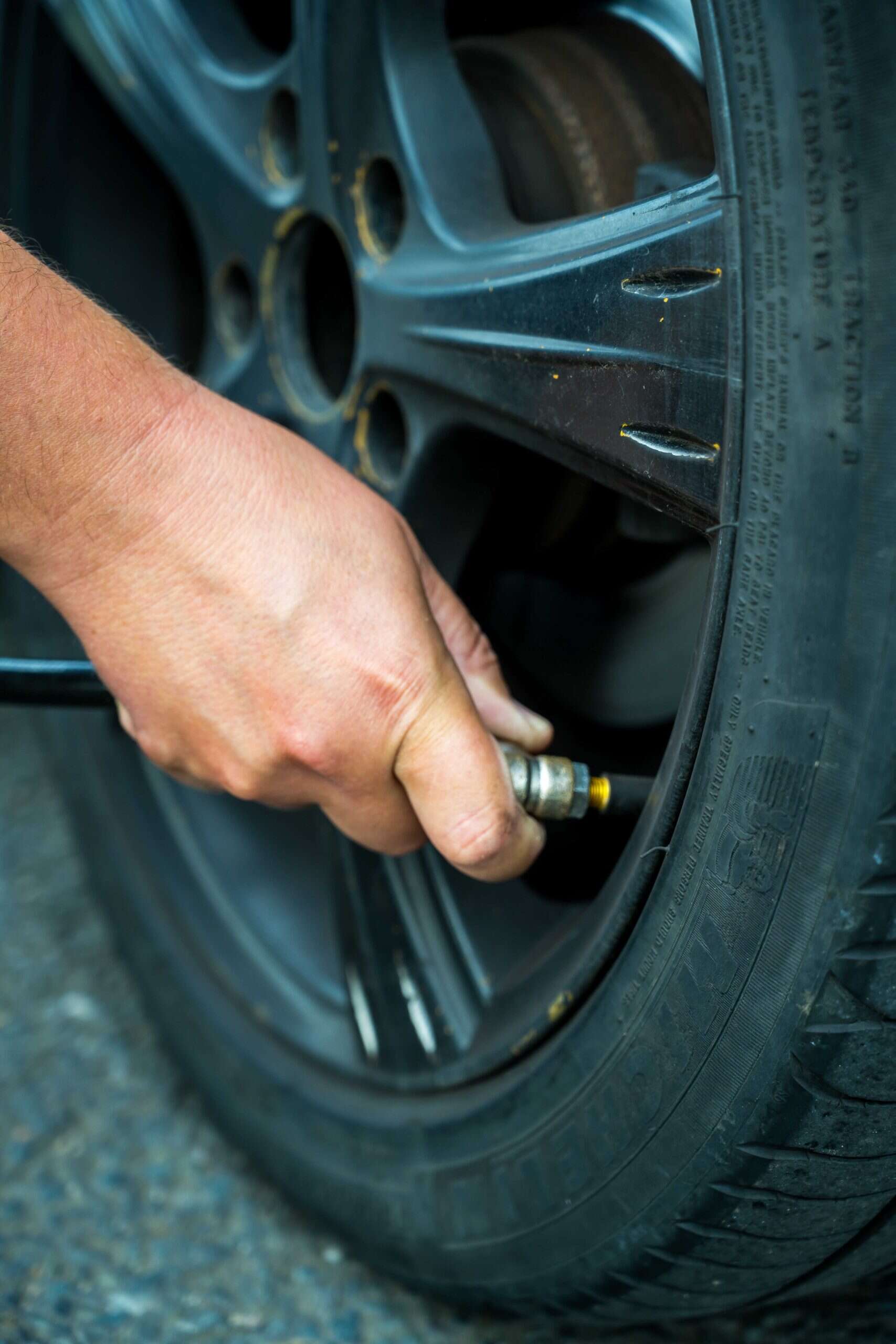
1. Check Tire Pressure Regularly

Low tire pressure hurts traction, wears tires unevenly, and drops fuel efficiency. In Chicago, cold weather drops PSI fast—about 1–2 PSI for every 10 degrees.
Underinflated tires cause failures and reduce tread life by up to 25%, according to the Tire Industry Association.
Use a digital gauge to check pressure monthly, or ask during oil changes. A quick check can prevent a flat or blowout.
ASE-Certified Technician:
“Even a few PSI under can cut tire life and traction—especially in extreme cold.”
A quick pressure check now can save you from a blowout later. Simple, right?
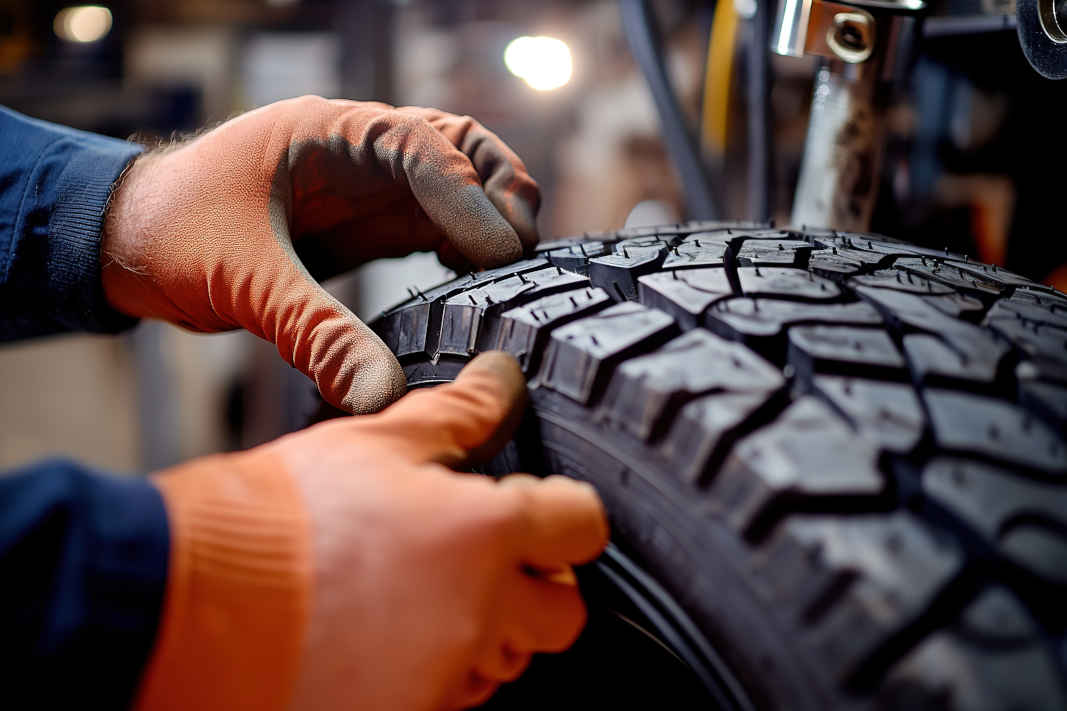
2. Watch for Uneven Tread Wear
Tires don’t wear out evenly unless everything under your car is working right. If you notice one edge wearing faster than the other—or weird patterns like cupping or feathering—that’s a sign something’s off. It could be a misalignment, unbalanced wheels, or even a suspension issue.
The problem? Uneven tread means your tires can’t grip the road like they should. That really matters when it’s raining or snowing, which, in Chicago, happens a lot.
Consumer Reports found that tires with worn tread need up to 100 more feet to stop on wet roads compared to new ones. That’s the length of a semi-truck—and it could be the difference between stopping in time or not.
Take a few seconds to glance at your tires when you’re parked. If something looks off, it probably is. And the longer you wait, the more it’s going to cost to fix.
2. Watch for Uneven Tread Wear

Tires don’t wear out evenly unless everything under your car is working right. If you notice one edge wearing faster than the other—or weird patterns like cupping or feathering—that’s a sign something’s off. It could be a misalignment, unbalanced wheels, or even a suspension issue.
The problem? Uneven tread means your tires can’t grip the road like they should. That really matters when it’s raining or snowing, which, in Chicago, happens a lot.
Consumer Reports found that tires with worn tread need up to 100 more feet to stop on wet roads compared to new ones. That’s the length of a semi-truck—and it could be the difference between stopping in time or not.
Take a few seconds to glance at your tires when you’re parked. If something looks off, it probably is. And the longer you wait, the more it’s going to cost to fix.
3. Rotate Tires Every 5,000–6,000 Miles
Tire rotation isn’t just a “nice to have.” It’s one of the easiest ways to make your tires last longer and wear evenly—especially if you’re racking up city miles on Chicago’s stop-and-go streets.
Why does it matter? Because your front tires wear out faster than the rears. They handle more weight and do most of the turning and braking. If you don’t rotate them, you’ll end up replacing just two tires at a time—and more often than you’d like.
The good news? You don’t have to overthink it. Just ask your mechanic to rotate your tires whenever you get your oil changed. It’s quick, it’s cheap, and it keeps your tread wearing down evenly.
Pro tip: If you’re already at Pulaski Automotive for an oil change, just say, “Hey, can you rotate the tires too?” We’ll take care of it while the hood’s up.
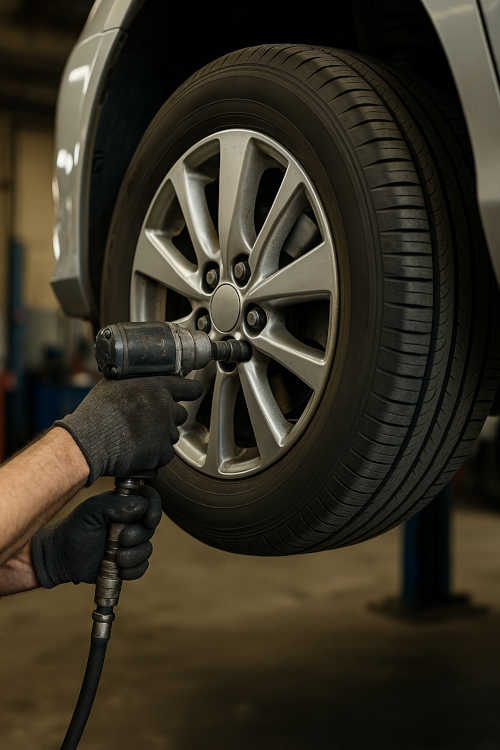
3. Rotate Tires Every 5,000–6,000 Miles

Tire rotation isn’t just a “nice to have.” It’s one of the easiest ways to make your tires last longer and wear evenly—especially if you’re racking up city miles on Chicago’s stop-and-go streets.
Why does it matter? Because your front tires wear out faster than the rears. They handle more weight and do most of the turning and braking. If you don’t rotate them, you’ll end up replacing just two tires at a time—and more often than you’d like.
The good news? You don’t have to overthink it. Just ask your mechanic to rotate your tires whenever you get your oil changed. It’s quick, it’s cheap, and it keeps your tread wearing down evenly.
Pro tip: If you’re already at Pulaski Automotive for an oil change, just say, “Hey, can you rotate the tires too?” We’ll take care of it while the hood’s up.
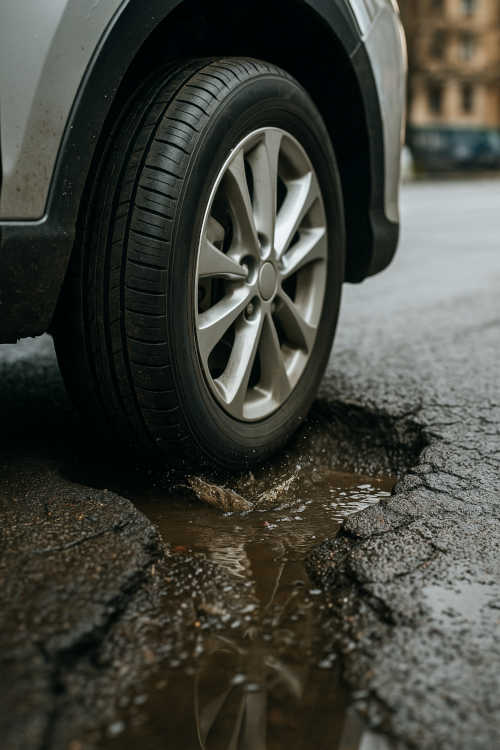
4. Don’t Ignore Vibration or Pulling
If your steering wheel starts to shake or your car pulls to one side, it’s not “just a weird quirk.” It’s your car trying to tell you something—and ignoring it can wear out your tires fast.
Shaking or pulling usually points to wheel alignment issues, tire imbalance, or even worn suspension parts. And in a city like Chicago, where every other street feels like a mini obstacle course, those problems pop up more often than you think.
Left alone, that shaky steering could lead to uneven tread wear, worse gas mileage, and more money spent replacing tires way too soon.
So if your car’s trying to dance while you’re just trying to drive, don’t wait. Bring it in and get it checked.
Quick story: A customer from Garfield Ridge came in because her steering wheel started vibrating on the Stevenson. Turns out, a tire had lost its balance weight. Ten minutes on the rack and she was good to go—with all four tires still in solid shape.
4. Don’t Ignore Vibration or Pulling

If your steering wheel starts to shake or your car pulls to one side, it’s not “just a weird quirk.” It’s your car trying to tell you something—and ignoring it can wear out your tires fast.
Shaking or pulling usually points to wheel alignment issues, tire imbalance, or even worn suspension parts. And in a city like Chicago, where every other street feels like a mini obstacle course, those problems pop up more often than you think.
Left alone, that shaky steering could lead to uneven tread wear, worse gas mileage, and more money spent replacing tires way too soon.
So if your car’s trying to dance while you’re just trying to drive, don’t wait. Bring it in and get it checked.
Quick story: A customer from Garfield Ridge came in because her steering wheel started vibrating on the Stevenson. Turns out, a tire had lost its balance weight. Ten minutes on the rack and she was good to go—with all four tires still in solid shape.
5. Replace Tires When Tread Is Low
Tires don’t last forever—even if they look okay at a glance. That tread pattern? It’s your grip on the road. And once it’s worn down, especially in rain or snow, it’s like driving on ice skates.
A quick way to check? Grab a penny. Stick Lincoln’s head into the tread. If you can see the top of his head, it’s time for new tires. Or better yet, let us take a look—we’ll give it to you straight, no upsell.
The NHTSA recommends replacing tires once they hit 2/32 of an inch. But honestly, in Chicago’s winters, you’ll want more tread than that to handle slush, ice, and sudden stops.
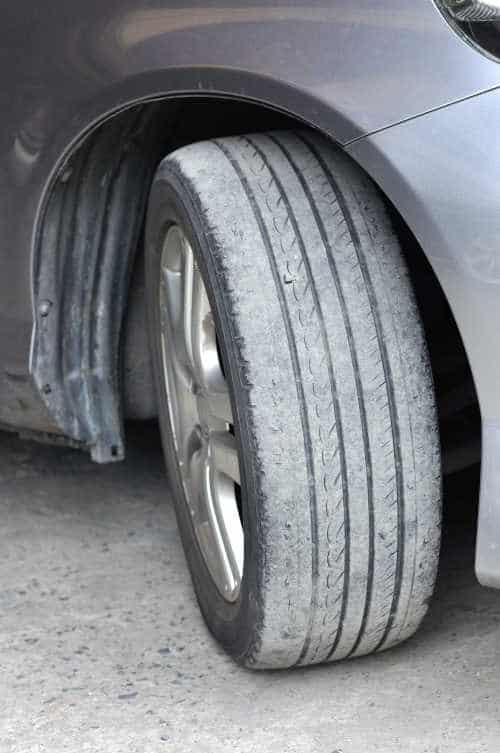
5. Replace Tires When Tread Is Low

Tires don’t last forever—even if they look okay at a glance. That tread pattern? It’s your grip on the road. And once it’s worn down, especially in rain or snow, it’s like driving on ice skates.
A quick way to check? Grab a penny. Stick Lincoln’s head into the tread. If you can see the top of his head, it’s time for new tires. Or better yet, let us take a look—we’ll give it to you straight, no upsell.
The NHTSA recommends replacing tires once they hit 2/32 of an inch. But honestly, in Chicago’s winters, you’ll want more tread than that to handle slush, ice, and sudden stops.
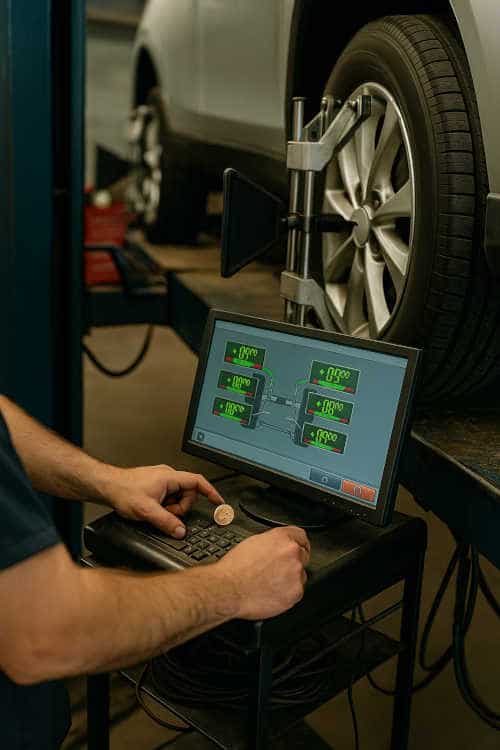
6. Keep Up With Wheel Alignments
Hit a pothole lately? Yeah, us too. This is Chicago—we’ve got two seasons: winter and pothole repair. And guess what gets knocked out of whack every time you hit one? Your wheel alignment.
When your wheels aren’t aligned, your tires don’t sit flat on the road. That causes uneven wear, poor handling, and can even mess with your gas mileage. Not to mention, it makes your car feel like it’s pulling or drifting—never a fun time on a busy street.
Most people don’t think about alignment until something feels “off.” But getting it checked once or twice a year (especially after pothole season) can save your tires from early burnout.
Real talk: We see it all the time at our shop near 6200 Pulaski—drivers from Garfield Ridge or West Lawn come in with worn edges on tires after just a few months. A simple alignment could’ve saved them hundreds.
Local keyword note: If you’re searching for wheel alignment in Chicago, West Lawn, or Archer Heights, we’ve got you covered.
6. Keep Up With Wheel Alignments

fHit a pothole lately? Yeah, us too. This is Chicago—we’ve got two seasons: winter and pothole repair. And guess what gets knocked out of whack every time you hit one? Your wheel alignment.
When your wheels aren’t aligned, your tires don’t sit flat on the road. That causes uneven wear, poor handling, and can even mess with your gas mileage. Not to mention, it makes your car feel like it’s pulling or drifting—never a fun time on a busy street.
Most people don’t think about alignment until something feels “off.” But getting it checked once or twice a year (especially after pothole season) can save your tires from early burnout.
Real talk: We see it all the time at our shop near 6200 Pulaski—drivers from Garfield Ridge or West Lawn come in with worn edges on tires after just a few months. A simple alignment could’ve saved them hundreds.
Local keyword note: If you’re searching for wheel alignment in Chicago, West Lawn, or Archer Heights, we’ve got you covered.
7. Don’t Skip Tire Balancing
Balancing might not sound like a big deal—but your tires think otherwise.
When your tires are out of balance, you’ll start to feel it. Maybe it’s a subtle vibration in the steering wheel, or maybe the whole car starts humming on the highway. Either way, it’s not just annoying—it can lead to uneven tread wear and shorten the life of your tires.
Tire balancing helps distribute weight evenly across all four wheels, so everything rolls smoothly. It’s especially important after you’ve had new tires installed, hit a nasty pothole, or haven’t rotated your tires in a while.
And here’s the good news: balancing is quick and inexpensive. Most shops (including ours) can handle it during a regular service visit.
8. Summer Bonus: Watch for Overinflation
Everyone talks about low tire pressure in winter, but here’s the summer twist—heat can actually make your tire pressure go too high.
As outside temps rise, the air inside your tires expands. Just a few extra PSI can cause your tires to overinflate, leading to reduced traction, a rougher ride, and faster wear right down the center of the tread.
If you’re hitting the highway for a road trip or driving daily through West Lawn or Garfield Ridge, you’ll want to check your tire pressure more often during hot spells—especially after your car’s been sitting in the sun all day.
Your Tires Work Hard—Let’s Help Them Out
Chicago roads don’t take it easy on your car, and your tires catch the worst of it. From deep potholes to sweltering summer heat and brutal winter salt, they’re constantly under pressure—literally.
But the good news? A few simple habits can go a long way. Rotate your tires. Check the pressure. Stay ahead of alignment issues. And when in doubt, ask a pro who knows what it’s like to drive these same streets.
At Pulaski Automotive, we’ve been helping drivers in West Lawn, Garfield Ridge, and Archer Heights stay safe and roll smooth for years. We’re right here on 6200 Pulaski, and we treat your car like we’d treat our own.
Need a quick tire check or a full rotation?
Stop by Pulaski Automotive or give us a call. Whether it’s a wobble, wear, or just something that doesn’t feel right—we’ll take a look, explain what’s going on, and get you back on the road without the runaround.
Let’s keep those tires (and your budget) rolling safely.
7. Don’t Skip Tire Balancing
Balancing might not sound like a big deal—but your tires think otherwise.
When your tires are out of balance, you’ll start to feel it. Maybe it’s a subtle vibration in the steering wheel, or maybe the whole car starts humming on the highway. Either way, it’s not just annoying—it can lead to uneven tread wear and shorten the life of your tires.
Tire balancing helps distribute weight evenly across all four wheels, so everything rolls smoothly. It’s especially important after you’ve had new tires installed, hit a nasty pothole, or haven’t rotated your tires in a while.
And here’s the good news: balancing is quick and inexpensive. Most shops (including ours) can handle it during a regular service visit.
8. Summer Bonus: Watch for Overinflation
Everyone talks about low tire pressure in winter, but here’s the summer twist—heat can actually make your tire pressure go too high.
As outside temps rise, the air inside your tires expands. Just a few extra PSI can cause your tires to overinflate, leading to reduced traction, a rougher ride, and faster wear right down the center of the tread.
If you’re hitting the highway for a road trip or driving daily through West Lawn or Garfield Ridge, you’ll want to check your tire pressure more often during hot spells—especially after your car’s been sitting in the sun all day.
Your Tires Work Hard—Let’s Help Them Out
Chicago roads don’t take it easy on your car, and your tires catch the worst of it. From deep potholes to sweltering summer heat and brutal winter salt, they’re constantly under pressure—literally.
But the good news? A few simple habits can go a long way. Rotate your tires. Check the pressure. Stay ahead of alignment issues. And when in doubt, ask a pro who knows what it’s like to drive these same streets.
At Pulaski Automotive, we’ve been helping drivers in West Lawn, Garfield Ridge, and Archer Heights stay safe and roll smooth for years. We’re right here on 6200 Pulaski, and we treat your car like we’d treat our own.
Need a quick tire check or a full rotation?
Stop by Pulaski Automotive or give us a call. Whether it’s a wobble, wear, or just something that doesn’t feel right—we’ll take a look, explain what’s going on, and get you back on the road without the runaround.
Let’s keep those tires (and your budget) rolling safely.


